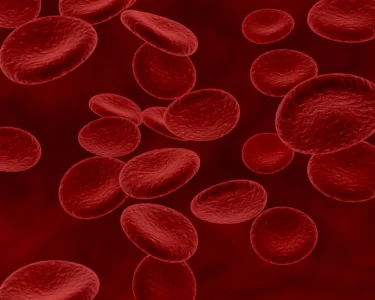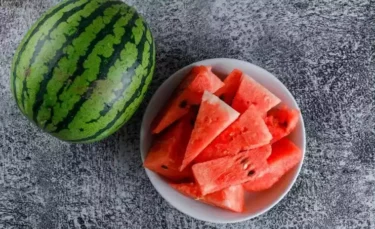Indians are food lovers, and their love for fennel seeds (Saunf) as a post-food refreshment is also well-known. Fennel has been valued in India for the longest time, particularly as a post-meal digestive aid. However, these tiny seeds are not just useful as a mouth freshener; they are also essential for their important medicinal and culinary value. India is among the largest exporters of fennel seeds today1.
These aromatic seeds come from the herb Foeniculum vulgare Miller. They are known to offer a wide range of nutritional properties that support health, emphasising the health benefits of fennel seeds2. Fennel is mainly grown in India, USA, Russia, Germany, and the Mediterranean areas1.
Dried fennel seeds are low in calories and a storehouse of various micro- and macronutrients3. Nutrients in 100g of dried fennel seeds are as follows3:
Minerals
Vitamins
Lipids
Amino acids
Based on my experience, I have observed that fennel extract might possess antifungal properties. Fennel extract might effectively combat different types of fungi, including those causing skin infections and candidiasis11.
Dr. Siddharth Gupta, B.A.M.S, M.D (Ayu)
Fennel seeds are traditionally valued for properties, such as:
In my experience, crude fennel extract may have anxiolytic properties, which could potentially help reduce anxiety. This is because fennel contains phytoestrogens, which are plant compounds that can mimic the effects of oestrogen in the body11.
Dr. Rajeev Singh, BAMS
The benefits of fennel seeds are numerous. They contain essential oils with anti-inflammatory and antibacterial properties that may help neutralise the bacteria that cause bad breath. Fennel seeds also increase the secretion of saliva, which may help reduce bad breath caused by dryness of the mouth. Fennel seeds can also be used to prepare an antibacterial mouthwash by adding them in warm water. The daily use of fennel may help improve your overall oral cavity health by helping you avoid bad breath and neutralising the bacteria in the mouth4.
The goodness of fennel seed oils helps stimulate the secretion of digestive juices and enzymes that support digestion. Fennel seeds contain the compounds anethole, fenchone, and estragole that have an antispasmodic (helping ease spasms) and anti-inflammatory effect. They also help provide relief from constipation, indigestion, and bloating. For better results, fennel tea can be consumed5. Research suggests that fennel may support digestive issues such as easing flatulence, and may protect against ulcers by reducing acidity6. Fennel seeds also contain a high amount of fibre7, which may contribute to better heart health as fibre-rich diets are often linked to a lower risk of heart disease.
Fennel seeds are a good source of potassium, a mineral known to balance the amount of fluid in the body. It also helps support healthy heart rate and blood pressure. Research also suggests that fennel seeds may increase nitrite levels in the saliva. Nitrite is believed to play a role in maintaining normal blood pressure levels5.
The health benefits of fennel seeds extend to respiratory health as well. The high amount of phytonutrients in fennel seeds help to clear the sinuses. These tiny seeds are believed to have expectorant properties, which may help in individuals with asthma, bronchitis and congestion5.
The compound anethole in fennel seeds is believed to support milk secretion. Traditionally, fennel has been used to help nursing mothers, as it is thought to have mild estrogenic (oestrogen-like) effects that may support lactation3.
Fennel seeds are known for their anti-inflammatory and anti-septic properties8. They are also abundant in minerals such as potassium, selenium and zinc that play an important role in balancing hormones and oxygen regulation in your bloodstream5. Fennel seeds are traditionally used for skin ailments like acne, wrinkles, pigmentation, puffiness of the face, and irritation and may improve the overall skin tone8.
Fennel seeds may support detoxification by helping digestion and elimination of waste from your body, which supports purification of blood5.
Fennel seeds contain vitamin A, which is an essential vitamin for the eyes. Traditionally, fennel seed extract was used for conditions like glaucoma5.
Fennel seeds are thought to influence the absorption of glucose and fats due to their estrogenic properties. This may help decrease the levels of bad cholesterol and triglycerides. Some studies also suggest that fennel may affect the secretion of leptin, which is known for its appetite-suppressing properties. As a result, fennel seeds may help improve your metabolism and help manage appetite, which could be useful in weight management9.
Taking fennel seeds daily may help in removing excess water and flushes out waste from your body. Fennel seeds are also known for its diaphoretic properties, which increase the production of sweat and removes the toxins out. This may reduce the risk factor for urinary tract infection5.
The contractions of the uterus during menstrual periods leads to severe pain. While many women take medicines for pain relief, they may not be always effective. Research suggests that fennel seeds may help ease menstrual discomfort in some women5.
Now that you know all essential information about fennel seeds, you may want to start including them in your regular diet. We’ve assembled a few easy fennel seed recipes to help you do just that and get started on your health journey with fennel seeds!
| How To Use Fennel Seeds | Preparation Method |
| Salad | – Toast fennel seeds in a pan while moving them constantly, then crush them into a powder after cooling. Mix it in with molasses, olive oil, lemon juice, garlic, salt and pepper. Drizzle this over a salad of kale, mint, parsley, orange, dates and radishes. |
| Bread | – Toast fennel seeds and crush them into a powder. Mix the dry ingredients (flour, yeast, fennel powder and salt) in a bowl and add olive oil. Knead into a dough, let it rise, then section it for baking. Bake, cool and slice to enjoy. |
| Soup | – Add olive oil, onion, celery, and fennel seeds to a pot. Add garlic, thyme, and salt to taste. Add in your broth of choice along with potatoes, and simmer until the potatoes are tender. At the end, add kale, cream, and additional salt and pepper. Serve warm. |
| Fennel tea | – To make fennel tea, start by toasting a teaspoon of fennel seeds. Add them to a cup of boiling water and let it steep for about 10 minutes. Strain the tea, sweeten it with honey or lemon if desired, and enjoy the soothing and aromatic fennel seeds tea. It’s a simple and natural way to benefit from its digestive and calming properties. |
Over the years, I have observed that the fennel herb may have a liver-protective function. It contains certain compounds that can help support and protect the liver from damage. These compounds work by promoting the detoxification processes in the liver and reducing oxidative stress, which is beneficial for maintaining liver health11.
Dr. Smita Barode, B.A.M.S, M.S.
Also Read: Hemp Seed: Uses, Benefits and Side Effects by Dr. Smita Barode
While fennel seeds are generally considered safe, their concentrated extracts or oils may have adverse effects if taken in excess. Here are a few cautions to keep in mind5:
May not be suitable for individuals with oestrogen-sensitive conditions, such as certain breast cancers10.
Also Read: 10 Best Foods For A Healthy Gut System
The tiny and aromatic fennel seeds are rich in nutrients, including vitamin C, vitamin A, antioxidants, minerals, and fibres3 Consuming a tablespoon of fennel seeds daily may help support overall well-being5. Although scientific evidence is limited for some of fennel seeds’ health benefits, they may contribute positively to your overall health.
Also Read: Aloe Vera: Uses, Benefits & Side Effects
Yes, you can add ground or powdered fennel seeds to an array of dishes to enhance flavour and also improve digestion. You can incorporate the seeds in desserts, soups, sauces, cakes, pancakes, drinks, bread and pickles.
If you are suffering from constipation problems, you can soothe your digestive tract by making fennel tea at home. Ground your fennel seeds and boil water with the powder. You can either add your regular tea leaves and have it as flavoured tea, or you can drink up the saunf water by itself.
Fennel seeds may support weight management as they can help curb appetite and aid in digestion, potentially leading to reduced calorie intake. However, they should be part of a balanced diet and a healthy lifestyle for effective weight management9.
Fennel seeds are considered safe in pregnancy when consumed in moderate amounts as a spice or flavouring. However, it’s advisable for pregnant individuals to consult their healthcare provider before incorporating any new herbs or spices into their diet to ensure safety and suitability for their specific circumstances5.
Fennel seeds may support liver health due to their potential liver-protective and anti-inflammatory properties. However, it’s important to consult a healthcare professional for personalised advice.
Fennel seeds may be beneficial for diabetes as they can help regulate blood sugar levels and provide antioxidants. However, individuals with diabetes should monitor their intake and consult a healthcare provider to ensure it aligns with their overall treatment plan3.
Fennel seeds can be beneficial for hair health as they are a rich source of nutrients, including antioxidants and essential vitamins. They may help promote hair growth and maintain hair strength when incorporated into a balanced diet or used in hair treatments.
Fennel seeds are generally considered kidney-friendly as they can act as a diuretic, potentially promoting urine production and supporting kidney function. However, it’s crucial to consume them in moderation and consult a healthcare professional for personalised guidance, especially if you have existing kidney issues.
Fennel seeds are traditionally believed to have a cooling effect on the body and are not typically associated with increasing body heat. In fact, they are often used to alleviate heat-related digestive issues.
Fennel seeds do not directly induce periods. However, they are believed to have properties that may help regulate menstrual cycles and alleviate menstrual discomfort when consumed5. The impact can vary from person to person, and it’s recommended to consult a healthcare professional for guidance on managing menstrual health.
Fennel seeds may benefit male health by helping regulate testosterone levels due to their zinc content, aiding digestion, and contributing to heart health through their fibre and nutrient content. However, while they can be a valuable addition to a balanced diet, they should not be relied upon as the sole solution for specific health concerns. Consulting a healthcare professional is recommended for personalised advice.
Disclaimer: The information provided here is for educational/awareness purposes only and is not intended to be a substitute for medical treatment by a healthcare professional and should not be relied upon to diagnose or treat any medical condition. The reader should consult a registered medical practitioner to determine the appropriateness of the information and before consuming any medication. PharmEasy does not provide any guarantee or warranty (express or implied) regarding the accuracy, adequacy, completeness, legality, reliability or usefulness of the information; and disclaims any liability arising thereof.
Links and product recommendations in the information provided here are advertisements of third-party products available on the website. PharmEasy does not make any representation on the accuracy or suitability of such products/services. Advertisements do not influence the editorial decisions or content. The information in this blog is subject to change without notice. The authors and administrators reserve the right to modify, add, or remove content without notification. It is your responsibility to review this disclaimer regularly for any changes.
Packed with loads of nutrients, sunflower seeds are actually fruits of the sunflower plant (Helianthus annuus). These tiny white coloured seeds are encased in greyish black shells. They have a soft texture and a mildly nutty flavour. You can roast them to increase their taste or have them as they are.
However, if you’re mindful of your calorie intake, it’s important to know the calories in sunflower seeds while appreciating their overall nutritional benefits.
There are two main types of sunflower seeds:
Large sunflower heads can yield around 2,000 seeds. These edible seeds can be enjoyed as a snack or added to:
You can even have sunflower butter made using these seeds.
Also Read: 14 Amazing Health Benefits of Pumpkin Seeds!





Also Read: Halim Seeds: Uses, Benefits, Side Effects and More By Dr. Rajeev Singh



During pregnancy, the benefits of eating sunflower seeds are many as they are loaded with Vitamin E, folic acid, which are known to be extremely beneficial for prenatal health.

People suffering from chronic inflammation can find relief by consuming sunflower seeds either as part of a trail mix or by adding them to their breakfast cereal or even by sprinkling some on their soup or salad. The health benefits of sunflower seeds include anti-inflammatory properties due to the presence of flavonoids, Vitamin E and other compounds.
Recently, I came across a study2 that states sunflower seeds might promote healthy bones. Sunflower seeds are said to have a rich source of minerals such as Magnesium, Phosphorus and Calcium that might help maintain healthy bones.
Dr. Siddharth Gupta, B.A.M.S, M.D (Ayu)
From my knowledge, Sunflower seeds might be your ally in treating asthma. Tocopherols found in sunflower seeds have anti-inflammatory properties that may play a significant role in conditions involving chronic inflammation, such as bronchial asthma, osteoarthritis, rheumatoid arthritis and asthma9.
Dr. Smita Barode, B.A.M.S, M.S.
Sunflower seeds should not be consumed more than 1 small cup (around 30 grams) per day. Consult your doctor before consuming these seeds if you are suffering from a chronic or acute illness.
Sunflower seeds are a proven source of minerals, such as magnesium. I recently read in an article that Sunflower seeds may help maintain muscle tone, strengthen them and avoid muscle cramps because they are a source of magnesium9.
Dr. Rajeev Singh, BAMS
Also Read: 15 Amazing Health Benefits of Papaya Seeds That You Should Know!
Sunflower oil has more vitamin E than sunflower seeds, whereas sunflower seeds contain vitamin B6, iron, phosphorus and pantothenic acid. Additionally, sunflower seeds are more expensive than sunflower oil. Thus, both have their pros and cons.
Adding sunflower seeds to one’s diet is really easy, like any other seed. You can sprinkle on top of your salad, add to oatmeal or muesli or granola, combine into trail mix, add as one of the ingredients of energy balls for weight loss, add to burgers, stir fry vegetables or even make sunflower butter similar to peanut butter.
You can store sunflower seeds in an airtight container when kept in an environment that is cool and dry, such as a refrigerator and freezer, for up to 12 months.
Yes, in moderation, dogs can eat plain, unsalted sunflower seeds as a healthy and nutritious snack. However, it’s crucial to remove the shells to prevent digestive issues, and consulting with a vet is recommended for individual dietary considerations.
Yes, sunflower seeds may be beneficial during pregnancy as they are a rich source of essential nutrients like folate, vitamin E, and omega-3 fatty acids, which support fetal development and maternal health. However, it’s important to consult with a healthcare professional for personalised advice based on individual dietary needs.
Yes, sunflower seeds may aid in weight loss as they are a nutrient-dense snack that provides satiety with healthy fats, protein, and fibre. However, it’s important to consult with a healthcare professional for personalised advice based on individual dietary needs.
In traditional Chinese medicine, sunflower seeds are often considered ‘heaty,’ meaning they may contribute to warmth in the body. However, individual responses vary, so it’s advisable to consult with a healthcare professional or nutritionist for personalised advice based on your health condition and dietary needs regarding sunflower seeds or any specific foods.
Sunflower seeds may be beneficial for individuals with hypothyroidism due to their selenium content, which supports thyroid function. However, it’s crucial to consult with a healthcare professional for personalised dietary advice and to ensure that it align with an individual’s specific thyroid condition and overall health.
To eat sunflower seeds, crack open the shell with your teeth, extract the seed, and discard the shell. Enjoy them raw, roasted, or seasoned, and consider adding them to salads, yoghurt, or as a wholesome snack for a satisfying crunch.
While sunflower seeds are nutritious, their calorie density may contribute to weight gain if consumed excessively. For personalised advice on incorporating them into a balanced diet, it’s recommended to consult with a healthcare professional or a registered dietitian.
Sunflower seeds, with their high content of unsaturated fats and phytosterols, may contribute to lowering cholesterol levels. For personalised guidance on incorporating them into a heart-healthy diet, consulting with a healthcare professional is advisable.
No, sunflower seeds are not a significant source of vitamin D. While they contain various nutrients, vitamin D is typically obtained from sunlight exposure, fortified foods, or other dietary sources.
Yes, sunflower seeds contain a small amount of omega-3 fatty acids, but they are not a primary source. Including a variety of foods rich in omega-3s, such as fatty fish and flaxseeds, is advisable for optimal intake.
While sunflower seeds offer nutritional benefits, there’s limited evidence supporting a direct impact on testosterone levels. For personalised advice on hormonal health, consulting with a healthcare professional is recommended.
Certainly, sunflower seeds are keto-friendly due to their low net carb content and high healthy fat content. For personalised dietary recommendations, especially in the context of a ketogenic diet, consulting with a healthcare professional or nutritionist is advisable.
Yes, sunflower seeds can be consumed raw and offer a healthy snack option. However, it’s advisable to consult with a healthcare professional to ensure that raw sunflower seeds align with your individual dietary needs and health conditions.
Sunflower seeds are not typically linked to kidney stone formation and can be part of a healthy diet. However, individuals with a history of kidney stones should consult a healthcare professional for personalised advice on their dietary choices and overall kidney health.
There is no direct evidence linking sunflower seeds to acne. However, individual reactions may vary, and consulting a dermatologist or healthcare professional for personalised advice is recommended, especially for those with specific skin concerns.
Yes, many bird species can safely consume sunflower seeds as they are a rich source of energy, healthy fats, and nutrients. Offering these seeds can attract a variety of birds to your garden or feeding area, contributing to their well-being.
Sunflower seeds benefits for male health include improved heart function, better hormone balance, enhanced muscle strength, and support for fertility. They are packed with protein, zinc, selenium, magnesium, and vitamin E, that are essential for men’s overall wellness.
Disclaimer: The information provided here is for educational/awareness purposes only and is not intended to be a substitute for medical treatment by a healthcare professional and should not be relied upon to diagnose or treat any medical condition. The reader should consult a registered medical practitioner to determine the appropriateness of the information and before consuming any medication. PharmEasy does not provide any guarantee or warranty (express or implied) regarding the accuracy, adequacy, completeness, legality, reliability or usefulness of the information; and disclaims any liability arising thereof.
Dashmularishta is a widely used Ayurvedic tonic prepared using roots of ten different plants, thus the term ”dasha”, meaning ten. According to Sarngadhara Samhita1 (a well-known Ayurvedic textbook), Dashmularishta has the power to restore the body from an inflammatory condition to good health by rebuilding the tissues and revitalising the body. It is thought to be a wonderful tonic for women during the prenatal and peri-menopausal phases. We are going to discuss the various Dashmularishta uses and benefits in this blog.
Dashmularishta has been conferred with various therapeutic uses in Ayurvedic medicine due to the combined effect of the herbs. The herbs used are:
Dashmularishta is an ayurvedic tonic with a wealth of therapeutic benefits3. Some of the Dashmularishta traditional uses and properties are listed below:
Osteoarthritis is a common progressive condition of weight-bearing joints, mainly the hips and knee joints. Osteoarthritis is significantly seen in the older population, and it is regarded as the leading cause of disability among them. Dashmularishta is considered one of the best additions to osteoarthritis therapy and may help reduce the inflammation and pain caused by joint inflammation. In animal studies2, Dashmularishta was proven to significantly reduce swelling and improve the ability to take longer steps.
Dashmularishta may help reduce the pain caused due to arthritis4. Oroxylum indicum, one of the primary ingredients of Dashmularishta, is well known for its pain-relieving property3. Animal studies2 indicate Dashmularishta benefits in osteoarthritis by potentially slowing the onset of stimuli that induce pain, preventing the pain itself. On further investigations, it may also prove effective in humans.
In Ayurveda, the herbal decoction called Dashmularishta is beneficial to manage heart diseases. Some ailments, like heart attack and stroke, are caused by the clotting of blood. Dashmularishta may act against the clotting property of platelets, which makes it an excellent agent to prevent blood clots and prevent heart attack and stroke. It may be used along with allopathic medicines for heart diseases5.
In my opinion, Dashmularishta is the ultimate body superhero. This awesome tonic made from a blend of powerful herbs may work wonders for your body. It’s like a detox and nourishment combo all in one. It may help to remove toxins and might nourish your precious body tissues11.
Dr. Rajeev Singh, BAMS
In Ayurveda, Bala roga (Paediatric conditions) in breastfed babies are managed by examining both mothers and babies. It is believed that any irregularity in the mother’s diet or her physiology may manifest in the child as allergic conjunctivitis. Hence, the infant’s mother with allergic conjunctivitis is given Dashmularishta to manage the irregularities in appetite and bowel movements. The infant may be given appropriate remedies depending on the symptoms, and Dashmularishta is considered a safe remedy for nursing mothers as well6.
For mothers who are breastfeeding, I would suggest trying Dashmularishta if you’re having trouble with your milk supply. This incredible tonic might work wonders in increasing milk production in women11.
Dr. Smita Barode, B.A.M.S M.S.
Also Read: Harad: Uses, Benefits, Side Effects, and More!
Dashmularishta is an ayurvedic tonic prescribed by the physician to be taken as directed.
Your Ayurvedic physician will prescribe you the form and dosage as per your health condition.
I would recommend Dashmularishta if you’re looking to go the extra mile during physical exercises. In a study10, it was found that it might actually boost your swim endurance and help you fight off fatigue. Talk about an antifatigue superstar!
Dr. Siddharth Gupta, B.A.M.S, M.D (Ayu)
No adverse side effects have been documented due to the administration of Dashmularishta9.
Also Read: Chandraprabha Vati (Chandraprabha Gulika): Uses, Benefits, Side Effects, Precautions & More!
Dashmularishta truly stands out as a versatile herbal tonic with numerous benefits for the body and mind. Whether you’re looking to reduce inflammation, support women’s health, or boost your overall vitality, Dashmularishta offers a natural way to nourish and strengthen your body. Remember, while it has been used safely for centuries, it’s always best to check with an Ayurvedic doctor to get the right dosage and guidance tailored for you.
Also Read: Noni Fruit Juice: Uses, Benefits, Side Effects By Dr. Rajeev Singh
Yes, Dashmularishta might improve the hormonal imbalance in women and rectify the menstrual period. This can improve the period cycle to a significant extent and restore it to health.
There have been no documented benefits of Dashmularishta specifically for men.
There have been no documented benefits of Dashmularishta in weight loss.
Dashmularishta might improve ovarian function by rectifying the hormonal imbalance that prevents one from conceiving. PCOS is a major cause of infertility in women. Dashmularishta is an ayurvedic medication that is an excellent remedy for PCOS and other gynaecological disorders. Thus, Dashmularishta is found to help conceive women with gynaecological disorders by improving the hormonal levels and preventing any related metabolic disorders.
Please consult your Ayurvedic doctor for appropriate prescriptions and directions. Your doctor will prescribe you a specific dosage depending on your symptoms.
No specific benefits of Dashmularishta have been documented for hair growth.
No specific benefits of Dashmularishta have been documented for the skin.
1. Pawar Nayana, Kogje Anushri, Bhondave Prashant, Nagarkar Bhagyashri, Kulkarni Omkar, Harsulkar Abhay, et al. Comparative free radical scavenging and anti-inflammatory potential of branded market samples of Ayurvedic formulations: Dashmoolarishta. International Journal of Pharma and Bio Sciences [Internet]. 2013 Jan [cited 2022 Mar 4];4(1):789–99. Available from: https://www.researchgate.net/publication/234877712_Comparative_free_radical_scavenging_and_anti-inflammatory_potential_of_branded_market_samples_of_Ayurvedic_formulations_Dashmoolarishta
2. Shetty YC, Godbharle S, Brahma S, Salgaonkar S, Rege NN. Evaluation of oral multi-herbal preparation of Dashmoolarishta on mice model of osteoarthritis. J Basic Clin Physiol Pharmacol [Internet]. 2017 Jun 21 [cited 2022 Mar 4]; Available from: https://www.researchgate.net/profile/Yashashri-Shetty/publication/32044759
3. Ahad Amjid, Ganai Ajaz, Zeeshan Najm Mohammad. Therapeutic potential of Oroxylum indicum: A review. Journal of Pharmaceutical Research and Opinion [Internet]. 2012 [cited 2022 Mar 4];163–72. Available from: https://www.researchgate.net/publication/285800921_Therapeutic_potential_of_Oroxylum_indicum_A_review
4. Reshma R. Parekar, Kumar K. Dash, Aditi A. Apte, Nirmala N. Rege. EVALUATION OF ANTI-INFLAMMATORY ACTIVITY OF ROOT BARK OF CLERODENDRUM PHLOMIDIS IN EXPERIMENTAL MODELS OF INFLAMMATION. International Journal of Applied Biology and Pharmaceutical Technology [Internet]. 2012 [cited 2022 Mar 4];3(3). Available from: https://www.researchgate.net/publication/327931225_EVALUATION_OF_ANTI-INFLAMMATORY_ACTIVITY_OF_ROOT_BARK_OF_CLERODENDRUM_PHLOMIDIS_IN_EXPERIMENTAL_MODELS_OF_INFLAMMATION
5. Parekar RR, Bolegave SS, Marathe PA, Rege NN. Experimental evaluation of analgesic, anti-inflammatory and anti-platelet potential of Dashamoola. Journal of Ayurveda and Integrative Medicine [Internet]. 2015 Jan 1 [cited 2022 Mar 4];6(1):11. Available from: https://www.ncbi.nlm.nih.gov/pmc/articles/PMC4395922/
6. Shantala Priyadarshini, Teragundi Panaga, Gangadkar Pooja. Ayurveda Management of Allergic Conjunctivitis in 6 months old baby- A successful case study . International Journal of AYUSH Case Reports [Internet]. 2020 [cited 2022 Mar 4];4(2). Available from: https://ijacare.in/index.php/ijacare/article/view/145
7. Nagarkar B, Mohite S, Kapoor E. EVALUATION OF EFFICACY OF DASHMOOLARISHTA IN CERVIVITIS: A PROOF-OF-CONCEPT STUDY. Article in Journal of Pharmacy and Pharmaceutical Sciences [Internet]. 2014 [cited 2022 Mar 4];3(6). Available from: https://www.researchgate.net/profile/Bhagyashri-Nagarkar/publication/264252846
8. Narayan Karandikar Ashwini. PCOS WITH INFERTILITY AND ITS AYURVEDA MANAGEMENT – A CASE STUDY [Internet]. International Journal of Ayurveda and Pharma Research. 2018 [cited 2022 Mar 4]. Available from: http://www.ijaprs.com/index.php/ijapr/article/view/1040
9. Dwivedi M, Sastry JLN, Rai RK, Vedula S. Clinical Evaluation of Dashmularishta (Ayurvedic formulation) in Restoring Normal Health of Postpartum Females . Journal of research in Traditional Medicine [Internet]. 2016 [cited 2022 Mar 7]; Available from: https://tmjournal.org/fulltext/140-1505301334.pdf?1646640147
10. Gupta A, Madaan A, Srivastava R, Kumar S, Sastry JLN. Evaluation of antioxidant, immunostimulatory and antifatigue properties of Dashmularishta using in vitro and in vivo assays. Indian J Exp Biol. 2018 Aug;56(8):598–603. Available from: https://www.researchgate.net/publication/327269604_Evaluation_of_antioxidant_immunostimulatory_and_antifatigue_properties_of_Dashmularishta_using_in_vitro_and_in_vivo_assays
11. Jalwal NK, Pawan, BK. Formulation and evaluation of tablet of a classical fermented preparation of Dashmularishta. Int J Pharm Sci Res. 2015 Mar 31;6(3):123–8. Available from: https://www.semanticscholar.org/paper/Formulation-and-Evaluation-of-tablet-of-a-Classical-N.-Jalwal/8a2e9c631a4ea975f652d33cacee6aae32225318
Disclaimer: The information provided here is for educational/awareness purposes only and is not intended to be a substitute for medical treatment by a healthcare professional and should not be relied upon to diagnose or treat any medical condition. The reader should consult a registered medical practitioner to determine the appropriateness of the information and before consuming any medication. PharmEasy does not provide any guarantee or warranty (express or implied) regarding the accuracy, adequacy, completeness, legality, reliability or usefulness of the information; and disclaims any liability arising thereof.
Cissus quadrangularis, commonly known as ‘Hadjod’ in Hindi, is a fleshy plant belonging to the Vitaceae family1. It is known by numerous vernacular names depending on the region. In Bangladesh, it is known as Hathisur in Sri Lanka, it is known as Heeressa in West Africa, it is known as Treebine, Zarnazaru, Banddiagra, Oongoonujaara in Thailand, it is known as Khankho, phet sangkhaat, san cha khuat and in India, it is known as Bonesetter, Adamant creeper, Veldt-grape, Hadjod, Hadsanka and Asthisamadhani. Hadjod, also known as Asthisamharaka, is a luscious herb found in India’s warmest regions. It can grow up to 500 meters above sea level in plain coastal areas, forests, and wastelands. Stem cuttings are used to propagate the herb. From June to December, the herb blooms. It is a climbing herb that turns leafless as it ages. It is a shrubby climber that can grow up to 1.5 meters tall. The plant blossoms small greenish-white flowers. The leaves are 2.5-5 cm long, broadly ovate or kidney-shaped leaves. The calyx is cup-shaped, short, and deciduous. There are 4-5 petals on each flower. The fruits are obovoid, very acrid, one-seeded, and dark purple to black. The stem is smooth, branched, glabrous, subangular, and fibrous and found to be buff colored with a greenish tinge. The stems measure 8–10 cm in length and 1–1.5 cm in width2. Iridoids, alkaloids, flavonoids, stilbene derivatives, sterols, triterpenes, fatty acids, methyl esters, and other phytochemicals have been found in the hadjod. The presence of five well-known chemicals on leaves was discovered, including Tetratriacotanol, Ecosyl eicosanoate, Tetratriacontanoic acid, α,β-amyrin, β-sitosterol. Polyphenols such as Daidezein, Quercetin, and Genistein were also reported in the leaves1.
The nutritional content fount in hadjod root powder/100 gm is:
Hadjod might be your ally in dental problems! Yes, you read it right Recent studies have revealed that the use of Hadjod may help in alleviating dental cavities when they start due to its anti-bacterial nature5.
Dr. Siddharth Gupta, B.A.M.S, M.D (Ayu)

Traditional Hadjod folklore is that it is used to relieve pain. Animal models that are widely accepted worldwide were used to test its analgesic potential. Hadjod’s effects were shown to be effective even at low doses, indicating that the herb has high potency in simulating central and peripheral pain. The phytosterols β-sitosterol and β-sitosterol glycoside, terpenoids, and phenolic substances such as resveratrol, quercetin, quercitrin, and kaempferol found in hadjod are thought to have analgesic properties2.

The presence of phytochemicals like polyphenols, glycosides, vitamin C, and β-sitosterol in hadjod may contribute to antiulcer potential or accelerate ulcer healing by releasing polyamines and transforming growth factor-α. Hadjod displayed cytoprotection by increasing potassium, hexosamine, bicarbonate, and the carbohydrate, protein ratio while lowering pepsin, proteins, and acid secretion in the stomach2.

Traditional literature mentions the use of hadjod in treating a variety of bacterial and viral infections. The steroids and flavonoids present in a partially purified extract of the hadjod stem were found to have excellent antiviral activity against herpes simplex virus types I and II2. In an antibacterial study, six different extracts of hadjod stem were tested against gram-positive and gram-negative bacteria. As a result, methanol extract was found to have superior antibacterial activity against S. pyogenes, B. subtilis, S. aureus, P. aeruginosa, and S. typhi, among other bacteria2. The antifungal activity of hadjod extract was determined by comparing it to the standard medication fluconazole. The diameter of the zone of inhibition generated on the surface of Petri dishes was used to determine antifungal activity. The study found that hadjod extract had promising antifungal efficacy against Aspergillus flavus1.

On the Haemonchus contortus worm, the anthelmintic activity of hadjod extract was investigated. The presence of alkaloids, flavonoids, tannins, and phenols in the extract may contribute to its anthelmintic effect2.

Hadjod has shown anticancer and antitumor activity in a variety of cancer cell lines, including breast cancer, osteosarcoma, leukaemia, Dalton’s ascitic lymphoma, and Erlich ascitic-induced carcinoma. The extract of hadjod at various doses has been investigated to protect rats from breast cancer. All biochemical and haematological changes caused by 7,12-Dimethylben (a) anthracene were reversed when rats were given hadjod extract2.

Ear oedema was used to test hadjod’s anti-inflammatory activity in rats. Hadjod can reduce swelling, relieve pain, treat allied illnesses associated with fractures, and aid in healing fractures. The inclusion of Beta-sitosterol and luteolin flavonoids in hadjod is responsible for its anti-inflammatory properties. Hadjod inhibits many inflammatory mediators that increase vascular permeability, support vasodilation, and cause oedema development3.

In hyperlipidemia models in rats, hadjod extract significantly reduced the total cholesterol, triglycerides, low-density lipoprotein cholesterol, and atherogenic index while increasing high-density lipoprotein cholesterol levels. Hadjod’s antihyperlipidemic properties are thought to be related to phytosterols, including stigmasterol, β-sitosterol, ketosteroid, and flavonoids like kaemferol, quercetin, and daidzein. Phytosterols may lower low-density lipoprotein cholesterol levels or diminish intestinal cholesterol absorption by increasing faecal cholesterol excretion2.

In rats, an extract of hadjod stem restored significant abnormalities caused by lead acetate. The use of hadjod extract on rats increases total sperm count. Antioxidant deficiency harms sperm viability and motility in males. Hadjod’s anti-infertility effect is attributed to its antioxidant enzymes restorative capacity or pregnancy abruption, implantation inhibition, and abortion induction2.

In diabetic rats, the injection of hadjod extract at various doses considerably lowers blood glucose levels. Furthermore, hadjod extract caused a rise in plasma insulin levels and restored liver antioxidant enzymes and histology in diabetic mice. Improvements in glycemic metabolism and regulation, free radical elimination, cholesterol reduction, insulin secretion, and microcirculation can contribute to hadjod’s antidiabetic action2.

Hadjod extract’s anti-hemorrhoids activity was tested on an isolated human umbilical vein, which caused contraction of vascular smooth muscles of the vein. Hadjod extract was found to have a vasoconstrictive impact on the intact inner lining of the vein2. In clinical research, taking a tablet of hadjod reduced piles symptoms in patients. Flavonoids, which are significant phytochemicals, are thought to help treat haemorrhoidal diseases by reducing localized bleeding, itching, and discomfort, potentially by improving capillary resistance and venous tonicity by lowering capillary permeability2.

Hadjod’s extract significantly increased blood carbon clearance, blood immunoglobulin levels, and a delayed type of hypersensitive response to sheep red blood cells. In another study, hadjod extract nanoparticles corrected immunosuppression in immunosuppressive animals using sheep red blood cells. The findings suggested that hadjod had immunomodulatory properties in both cellular and humoral immunity.

Hadjod has been shown to have antiarthritic potential in various animal models. Hadjod extract was found to have an antiarthritic effect by reducing bone and cartilage degeneration, excessive paw inflammation, and associated biochemical and haematological changes2.

Hadjod’s antiosteoporotic potential has been demonstrated in various animal models by several authors. An osteoporotic rat model of ovariectomy, closed fracture by bending the radius-ulna in rats and dogs was used to test the antiarthritic activity of hadjod extract. The work was carried out in vitro using cell lines. Few clinical studies have shown that hadjod, combined with Zingiber officinale, can reduce joint swelling, discomfort, and soreness in osteoporotic and fractured patients. Hadjod’s bone protective activity is thought to be due to its steroidal content, which functions as phytoestrogens to prevent or minimise bone loss and suppress bone reabsorption caused by oestrogen deficiency2.

Various research has already assessed the antioxidant activity of hadjod utilizing different antioxidant assays and procedures. By lowering serum enzyme levels and boosting antioxidant enzyme levels, the antioxidant activity of hadjod extract was examined on liver protective activity2.
I recently read an article that says Hadjod may be used as a diuretic. Hadjod is known for its anti-inflammatory and antioxidant properties6.
Dr. Rajeev Singh, BAMS
Also Read: Banana Leaf: Uses, Benefits, Side Effects By Dr. Smita Barode
Your Ayurvedic physician will guide you for the appropriate dose and frequency of medication as per your condition. Avoid self-medication.
Also Read: Kachnar (Bauhinia Variegata): Uses, Benefits, Nutritional Value & More!
Various studies demonstrate that hadjod extracts are safe and free of side effects at commonly used doses. The reported side effects of hadjod extract are lack of appetite, staggering, dyspnoea, and diarrhoea in a limited case4.
Also Read: Akarkara (Pellitory): Uses, Benefits, Side Effects & More!
It is known as Heeressa, Hathisur, Khankho, Zarnazaru, Treebine, Banddiagra, Oongoonujaara, phet sangkhaat, san cha khuat, Veldt-grape, Adamant creeper, Asthisamadhani, Bonesetter, and Hadsanka in different regions2.
The plant contains several phytoconstituents like iridoids, stilbene derivatives, sterols, triterpenes, alkaloids, fatty acids, methyl esters, flavonoids1,2.
It treats constipation, piles, tumours, blindness, loss of appetite, muscular pain, vata and kapha, epileptic fits, chronic ulcers, and bone fractures. It is also used as a digestive, anthelmintic, analgesic, laxative, stomachic, tonic aphrodisiac agent, treatment of back and spine problems, pus removal2.
Hadjod is used in hadjod tablets, capsules, powder and drops2.
Yes, hadjod has bone protective activity. Hadjod’s protective action is thought to be due to its steroidal content, which functions as phytoestrogens to prevent or minimise bone loss and suppress bone reabsorption caused by estrogen deficiency2.
Disclaimer: The information provided here is for educational/awareness purposes only and is not intended to be a substitute for medical treatment by a healthcare professional and should not be relied upon to diagnose or treat any medical condition. The reader should consult a registered medical practitioner to determine the appropriateness of the information and before consuming any medication. PharmEasy does not provide any guarantee or warranty (express or implied) regarding the accuracy, adequacy, completeness, legality, reliability or usefulness of the information; and disclaims any liability arising thereof.
Links and product recommendations in the information provided here are advertisements of third-party products available on the website. PharmEasy does not make any representation on the accuracy or suitability of such products/services. Advertisements do not influence the editorial decisions or content. The information in this blog is subject to change without notice. The authors and administrators reserve the right to modify, add, or remove content without notification. It is your responsibility to review this disclaimer regularly for any changes.
Stomach pain is usually a localized ache that has happened to all of us. Usually, stomach cramps and discomfort indicate digestive disorders. But the intermittent colicky pain that occurs sometimes, can alarm you. If you have been witnessing this kind of pain over a long period of time, then it is time you visit the doctor, especially if your stomach pain is accompanied by symptoms like nausea and vomiting.
In this blog, we will discuss 6 common causes behind stomach pain that comes and goes. It is important to understand these causes and know when to seek immediate medical attention to avoid risk of any complications
Here are a few likely causes behind recurring stomach pain:

Sometimes the appendix, an abdominal organ, can get inflamed causing a condition called appendicitis, which could lead to stabbing pains that intensify and ebb. The pain usually originates around the umbilicus and migrates to the right lower quadrant, and it typically intensifies and persists. There might be other symptoms like bloating, vomiting, fever, loss of appetite, and rebound tenderness. The symptoms usually develop rapidly over a few hours. Appendix rupture can cause serious medical emergencies like peritonitis and sepsis, so you must seek immediate medical attention1.

These commonly cause sharp, dull, aching, or sudden, often localized to the lower abdomen or pelvis. Many women have ovarian cysts, which are usually harmless. But sometimes they enlarge, and this is when they trigger pain.
In such cases, the epicentre of the pain is in the lower abdomen or pelvis, usually on one side,. You may also notice bloating and a sensation of pressure in your stomach2. You can use hot compresses as a temporary measure to deal with the pain. While warm compresses can ease mild discomfort, they should not be used as a substitute for medical evaluation in the case of sudden or severe pain, as urgent intervention may be needed for complications like torsion or rupture.

Sometimes bilirubin or cholesterol accumulates to form stone shaped objects inside your gallbladder. They may even obstruct the cystic duct (from the gallbladder) or common bile duct (if the stone travels farther), and this causes colicky, steady, or severe right upper quadrant or epigastric pain3. Other indicators of gallstones are a yellowish tinge in the eyes, nausea, vomiting, sweating and fever. While some herbs may soothe mild dyspepsia, they do not treat gallstones and may delay proper care. In fact, peppermint can sometimes worsen symptoms by relaxing the sphincter of Oddi.

In Irritable Bowel Syndrome (IBS), you may experience pain in your stomach after meals. Or the pain might appear during specific times of the day. Although, IBS cannot be diagnosed solely based on symptoms after meals; it requires clinical evaluation and ruling out other conditions. Other symptoms of this disorder are pain accompanying defecation, the presence of mucus in faeces, diarrhoea4, and flatulence.

UTIs are a common, painful and bothersome disease. Usually, the bladder is a common site of infection, but actually, any section of the tract can become infected. Not only does it trigger pain in the abdomen, but you might also feel a burning sensation when you urinate5.
In my experience the major causes of abdominal pain in children are behavioural, lymph nodes in intestines and worms. All should be evaluated and treated by a paediatrician.
Dr. M.G. Kartheeka, MBBS, MD(Pediatrics)

This ulcer develops on the lining of your stomach. Prolonged usage of specific medicines such as NSAIDs (painkillers) and infections like H-pylori can cause ulcer formation6. They can cause a constant burning sensation in your abdomen. Some ulcers may heal spontaneously but usually they require medical treatment to ensure healing and prevent complications like bleeding or perforation.
Children, especially in the early ages, frequently suffer from stomach aches. If their stomach ache is accompanied by weight loss, diarrhoea, vomiting, fever, you should always consult a paediatrician to diagnose the cause and provide the treatment for the same.
Dr. Ashish Bajaj, M.B.B.S., M.D. in Clinical Pharmacology and Toxicology
If you face any of these signs while dealing with abdominal pain then don’t wait any longer. Consult a doctor immediately!
Also Read: Dysentery: Causes, Symptoms, Treatment, And Home Remedies
Unless you are facing any of the above-mentioned symptoms, your abdominal pain will most likely go away without the need for any special medical treatment. However, here are a few ways you can deal with abdominal pain yourself at home to reduce the pain:
Ignoring abdominal pain that comes and goes can lead to medical complications in the future, you really should consult a doctor to find out if any one of the above-mentioned disorders is at the root of your stomach ache. Some of them need immediate medical treatment. Don’t wait till the symptoms become even more prominent because the longer you wait, the longer it will take for you to heal completely.
Also Read: Natural Home Remedies for Ear Pain
Yes, stress might cause stomach pain. When under stress, the body releases hormones that can disrupt the digestive system, leading to symptoms like stomach pain, nausea, or indigestion.
Yes, constipation can cause stomach pain as it leads to the accumulation of stool in the intestines, which can cause cramping and discomfort in the abdominal region. This pain can range from mild to severe depending on the extent of constipation.
Yes, back pain can sometimes lead to stomach pain. Conditions such as spinal issues or muscle strains in the back can radiate discomfort to the abdomen, causing secondary stomach pain or discomfort. However, it’s essential to consult a healthcare professional for a proper diagnosis and treatment.
Yes, dehydration can cause stomach pain as it can lead to reduced blood flow to the stomach lining, causing irritation and discomfort. Additionally, dehydration can slow down digestion, resulting in constipation, which can also contribute to stomach pain.
Yes, gas can cause stomach pain as it can accumulate in the digestive tract, leading to bloating, cramping, and discomfort. Excessive gas production from factors like certain foods, swallowing air, or underlying digestive conditions can exacerbate stomach pain.
Yes, pregnancy can cause stomach pain due to various factors such as hormonal changes, stretching of the uterus, and pressure on surrounding organs as the foetus grows. Common causes include round ligament pain, constipation, and gas, but severe or persistent pain should be evaluated by a healthcare provider.
Haemorrhoids typically don’t directly cause stomach pain, as they are swollen veins in the rectum or anus. However, severe cases or complications like thrombosis can lead to discomfort that may radiate to the lower abdomen. It’s crucial to consult a healthcare professional for proper diagnosis and treatment of any abdominal pain.
Stomach pain after sex isn’t always normal. While some mild discomfort can happen due to muscle movements, if it’s severe or keeps happening, it’s essential to see a doctor to find out why.
Yes, stomach pain can be a symptom of menstruation, commonly known as menstrual cramps or dysmenorrhea. These cramps result from the uterus contracting to shed its lining, causing discomfort in the lower abdomen. However, if the pain is severe or accompanied by other concerning symptoms, it’s advisable to consult a healthcare provider.
Disclaimer: The information provided here is for educational/awareness purposes only and is not intended to be a substitute for medical treatment by a healthcare professional and should not be relied upon to diagnose or treat any medical condition. The reader should consult a registered medical practitioner to determine the appropriateness of the information and before consuming any medication. PharmEasy does not provide any guarantee or warranty (express or implied) regarding the accuracy, adequacy, completeness, legality, reliability or usefulness of the information; and disclaims any liability arising thereof.
Moringa, also known as drumsticks, is a common ingredient used in Indian cooking. This herb has been used in Ayurveda since olden times because of the numerous benefits it offers for your health. It is used to help deal with skin problems, diabetes, and infections. In addition to these benefits, it is also believed to help you lose weight1.
In this blog, we will discuss the role of moringa in weight loss and the science behind it. But before we move onto that, let’s quickly go through the nutritive value of moringa, the leaves of which are mainly used for medicinal purpose.
Moringa is native to sub continental parts of Asia and Africa, leaves of moringa are rich in beneficial minerals and vitamins. Moringa leaves also potentially benefit in reducing the risk of cancer and heart disease as they are rich in polysaccharides. flavonoids, polyphenols, ascorbic acid and other antioxidants1.
Approximately 32 g of fibre is present in 100 g of moringa powder2. Fibre, especially soluble fibre, is recommended for people looking to lose weight as it helps suppress appetite and makes you eat less than usual. Fibre also lowers the level of hunger hormones that the body produces3.
Moringa is also rich in:
Weight loss is majorly governed by your eating habits, the calorie deficit diet combined with exercise is the best way to get rid of excess body weight, the phytonutrients and medicines might help in shedding some extra weight, but that is very minimal.
Dr. Nikhil Yadav, MBBS MD, CCEBDM
Moringa leaves are high in fibre, which aids in water absorption and keeps you feeling full for longer. This inherent quality of moringa leaves helps overall well-being by naturally suppressing your appetite and reducing cravings, which slows the absorption of food and helps to keep blood sugar levels in check2. You consume fewer calories because you are satiated for a longer period.
Monounsaturated fatty acids make up to 73.5 percent of Moringa oleifera seeds. These fatty acids help maintain the lipid levels and keep blood sugar levels in check, thereby protecting the heart1. Few studies9 have shown that moringa extracts can help avoid fat accumulation in the body and promote stable and balanced level of fats (lipids) in the body. Hence, moringa seeds is an excellent choice for weight loss while maintaining overall health.
Potassium, magnesium, iron, zinc, calcium, and copper are all abundant in moringa leaves, while having a low caloric content, making it ideal for incorporating into the diet of people who want to reduce weight.
Moringa leaves are anti-inflammatory, which is good for your health when your goal is to lose weight. They are enriched with antioxidants containing chlorogenic acid, which helps in weight loss. It helps in bringing the blood sugar levels to normal and burns the excess fat1,10.
It’s crucial to remember, though, that moringa or any other natural remedy can only aid the fat-burning process; it should be combined with other lifestyle adjustments like dietary changes and physical activity.
The health benefits of moringa have been attributed to the antioxidants and polyphenols present in it. Moringa powder is has the following potential health benefits–
Although initial studies have shown moringa to be beneficial in several health conditions, further large-scale human trials are needed to confirm these benefits.
If you are taking medications for blood sugar or blood pressure, then consult a doctor before taking moringa.
Also Read: 11 Healthy Foods That Can Help You to Gain Weight
In general, Moringa does not have any serious side effects associated with it14, however, it’s advisable to consume it in moderation, and individuals should be aware of potential moringa side effects, particularly when taken in excessive amounts. Most people can consume this herb/vegetable with no issues. Regarding Moringa powder too, most studies so far have not shown any serious effects. However, it has been tested that consuming 8 grams a day for 40 days regularly has found no adverse effects in type 2 diabetes patients17. But still if you are diabetic or currently using blood pressure medication please speak with your doctor. Moringa may increase the effect of such medication leading to complications11.
Keep in mind, while many parts of the moringa plant are considered edible, not all are safe (e.g. Bark)1. If a moringa powder or capsule is made from the bark of the plant, pregnant women should avoid taking those supplements. The moringa leaves may show antifertility properties in some pregnant women11. The bark of this plant may contain chemicals that lead to contractions in the uterus, this, in turn, may increase the risk of a miscarriage. Speak to your doctor if you are pregnant or breastfeeding before taking any kind of Moringa. Another thing to remember is that the raw form of moringa roots should not be consumed. They have alkaloids in them that might lower blood pressure and heart rate18. They contain laxative qualities as well, so they should be used in moderation.
Also Read: 8 Effective Exercises That Help with Weight Loss!
Moringa is a plant that has some great health benefits. Leaves of the tree hold abundant vitamins, minerals, and polyphenols that can help lower your risk of diabetes, blood pressure, heart disease, inflammatory conditions and can indeed help you to support your weight loss goals. However, like with any natural product, consuming in moderation is key. Also, it’s important to discuss with your healthcare provider before starting especially if you have any medical conditions.
Also Read: Moringa Leaves – Health Benefits That You Should Know
Yes, moringa and drumstick scientifically known as Moringa oleifera, is the same plant. Both terms are commonly used interchangeably to describe this versatile and nutritionally rich plant.
Certainly, mixing moringa powder with milk is a popular and nutritious choice. This combination not only enhances the flavour but also provides a convenient way to incorporate the numerous health benefits of moringa into your diet.
Yes, incorporating moringa powder into your daily routine is generally considered safe and beneficial. Its rich nutritional content makes it a valuable addition to support overall health, but it’s advisable to consult with a healthcare professional for personalized advice.
There is no evidence regarding the consumption of moringa causing liver damage when consumed in moderate amount. However, individuals with existing liver conditions should consult a healthcare professional before adding moringa or any supplement to their diet.
There is no conclusive evidence linking moderate moringa consumption to kidney damage. Nevertheless, individuals with pre-existing kidney issues should seek medical advice before incorporating moringa or any supplement into their diet.
Moringa powder can be easily incorporated into your diet by adding it to smoothies, and beverages, or sprinkling it on salads and meals. Additionally, you can make a nourishing moringa tea by dissolving the powder in hot water.
Yes, moringa is a good source of plant-based protein. It contains all nine essential amino acids, making it a complete protein, and is suitable for individuals seeking alternative protein sources, particularly in vegetarian or vegan diets.
Moringa leaves contain trace amounts of vitamin B12, but it is not considered a reliable source for meeting daily B12 requirements. Individuals relying on B12 for dietary needs should explore alternative sources or supplements, as moringa may not provide sufficient amounts of this vitamin.
No, moringa and matcha are not the same. Moringa comes from the leaves of the Moringa oleifera tree, offering a nutrient-rich supplement. Matcha, on the other hand, is a type of powdered green tea made from shade-grown tea leaves, providing a unique set of antioxidants and caffeine.
No, moringa and neem are different plants. Moringa (Moringa oleifera) is known for its nutrient-rich leaves, while neem (Azadirachta indica) is recognized for its medicinal properties, particularly in the form of neem oil derived from its seeds. Both have distinct uses and benefits.
No, moringa and spirulina are different. Moringa comes from the leaves of the Moringa oleifera tree, offering a rich source of nutrients. Spirulina, on the other hand, is a type of blue-green algae, provides a unique set of nutrients and is often consumed as a supplement or food source.
No, moringa and horseradish are different plants with distinct characteristics. Moringa (Moringa oleifera) is known for its nutrient-rich leaves, while horseradish (Armoracia rusticana) is a pungent root commonly used as a condiment.
The best time to drink moringa tea for weight loss is generally in the morning or before meals. Consuming it on an empty stomach may help boost metabolism and promote a feeling of fullness, contributing to weight management when combined with a healthy diet and exercise.
The time it takes for moringa to show effects can vary among individuals. Some may experience benefits soon after incorporating it into their routine, while others may take a few weeks. Consistent consumption over time is recommended to fully experience the potential health effects of moringa.
Disclaimer: The information provided here is for educational/awareness purposes only and is not intended to be a substitute for medical treatment by a healthcare professional and should not be relied upon to diagnose or treat any medical condition. The reader should consult a registered medical practitioner to determine the appropriateness of the information and before consuming any medication. PharmEasy does not provide any guarantee or warranty (express or implied) regarding the accuracy, adequacy, completeness, legality, reliability or usefulness of the information; and disclaims any liability arising thereof.
Links and product recommendations in the information provided here are advertisements of third-party products available on the website. PharmEasy does not make any representation on the accuracy or suitability of such products/services. Advertisements do not influence the editorial decisions or content. The information in this blog is subject to change without notice. The authors and administrators reserve the right to modify, add, or remove content without notification. It is your responsibility to review this disclaimer regularly for any changes.
As the mercury levels start rising and drinking gazillion litres of water is not making a difference, a good way to keep your body cool is by consuming the right diet. This can help reduce internal heat and make you feel more comfortable with the soaring temperatures. While cold drinks and frozen desserts might seem appealing options, they are not. They are usually full or sugar and can instead, affect you adversely. So, knowing what to eat in summers will not just help you beat the heat but also keep you healthy. Here is our list of foods that will cool you down this summer:

‘Cool as a cucumber’- heard that one, right? Cucumbers instantly hydrate the body and bring down the body heat. You can snack on them as a salad or with your favourite dip or mix them into a juice with ginger and some lemon. Due to their high water content, they aid in providing hydration by replenishing lost fluids and refresh the body1.
In my opinion, cucumber juice can work wonders for your skin. It’s not just refreshing to drink, but it might also have nourishing properties when applied topically. Cucumber juice may have a soothing effect on the skin, helping to calm down irritation and reduce swelling. And if you’ve spent too much time in the sun, cucumber may even help ease the pain of sunburn4.
Dr. Siddharth Gupta, B.A.M.S, M.D (Ayu)

Watermelons sell like hot cakes in the summer. Juicy and full of nutrients that the body needs, the melons make for great summer companions. Not only do they hydrate but boost the body with power-packed nutrients like Vitamin A, Vitamin C, magnesium, potassium and fiber2.

Green leafy vegetables are high in nutrient value, calcium and provide a good cooling effect on the body. Spinach, lettuce, Amaranth, Chinese cabbage and kale are your summer talismans or the safest go-to vegetables. They can be had in smoothies, salads or as a side dish in a meal.

The Indian drink of the summer is buttermilk and the wisdom of the ages shines through. Not only does it keep you hydrated but it also is beneficial for digestion3. Have it with roasted cumin seeds, fresh coriander and some ginger to add zing to your day.
From experience, let me tell you about the magic of buttermilk! It’s like a magical potion that can work wonders for slowing down the ageing process. By nourishing our bodies with its rich nutrients, buttermilk may keep our arteries flexible and might also help combat age-related symptoms such as memory decline, vision problems, wrinkles, and greying hair. Cheers to a youthful and vibrant life with the goodness of buttermilk13!
Dr. Rajeev Singh, BAMS

The king of fruits is your best alternative to reducing body heat. There are several ways of incorporating it into your diet. Have it raw, as aam Panna- that quintessential summer drink, as chutney or curry. Mangoes are great for digestion, and can help deal with heat strokes.
From what I’ve seen, mango is much more than just a delicious fruit. It contains bioactive components that may have anticancer activity in various types of tumour cells10.
Dr. Smita Barode, B.A.M.S, M.S.

The easiest way to add flavour to your glass of water is to have it with lemon5. They not just hydrate your body but also add a healthy dose of Vitamin C to your diet, boosting your immune system and helping improve your skin health too! So, add a dash of lemon to your juices and salads or just drink it up as lemonade made with plain water and soak in its benefits.
From my perspective, I’ve learned that lemons are more than just a tangy fruit. They may hold incredible benefits for our eyes. The antioxidant properties of lemons might help protect your eyes from ageing and macular degeneration, which is fantastic news for maintaining healthy vision12.
Dr. Anuja Bodhare, B.A.M.S, M.D (Ayu)

Packed with calcium, curd should be your go-to option for a healthy summer alternative to cold fizzy drinks. Rich with Vitamin B and gut-friendly bacteria, curd helps with digestion and soothes the body from within. Add flavour to it by mixing it with mangoes, strawberries and other fruits. It can also be had as Shrikhand.

To boost the protein content in your diet without depending on meats, turn to fish. Rich in good fatty acids, fish makes for a tasty alternative, especially in summer. Since it generates less heat on consumption, you won’t feel lethargic and uncomfortably full, a feeling that usually we associate with after having chicken and meat dishes.
Also Read: Incredible Health Benefits Of Muskmelon

Avocado is a superfood in the true sense. The fruit is laden with a high amount of mono-saturated fatty acids which can help manage your cholesterol levels and support heart health while detoxifying the blood6. They are also easily digested, so your body will not need to create more heat to digest them. But if you have deranged lipid profile then do check with your healthcare practitioner to know the correct quantity for consumption.
I often recommend incorporating fruits and vegetables into your skincare routine to promote healthy skin. Avocado, in particular, has shown great potential in improving skin health. Its rich content of lutein and zeaxanthin, which are easily absorbed by the body, may help shield your skin from the harmful effects of UV rays11.
Dr. Ashok Pal, B.A.M.S

Coconut water is filled with electrolytes which help to keep you hydrated and cool. Rich in essential electrolytes, the power drink helps beat the heat during summer while keeping one hydrated and energetic throughout the day7. It can help keep you hydrated and boost your digestive capacity.

Mint is a herb that has cooling properties. One of the easiest herbs to find fresh in the market, both peppermint and spearmint are the best for consumption during summers. Mint helps in digestion without raising body heat. It also relieves nausea and headaches and eases depression and fatigue8. Making tea with mint leaves can help induce sweating to reduce body temperature. Mint combined with lime too makes a very refreshing drink for summer.
Also, you can add crushed mint leaves to water and have throughout the day. But make sure you allow the mint leaves to soak in the water for an hour before drinking it.

Chamomile tea is known for its antioxidant, soothing and anti-inflammatory properties. This herb can cool the body, ease insomnia, calm anxiety and soothe the digestive system9. It can be great for the skin and scalp as well, as it helps soothe inflammation, rashes, insect bites and even cuts and scrapes. It can help relax the muscles contributing to a soothing and cooling feel.
Remember, though most of these foods have been believed to be beneficial for cooling the body, further large-scale human trials can corroborate these findings.
Also Read: 13 Health Benefits of Watermelon and Recipes
Incorporating these 12 hydrating and nutrient-dense foods into your summer diet can help in keeping your body cool, maintaining electrolyte balance, and overall hydration. Rich in water content, essential vitamins, and antioxidants, these foods not only help lower core body temperature but also provide other health benefits. By making informed dietary choices, you can enhance your body’s resilience to heat and maintain optimal body function throughout the summer months. However, if you have any medical condition, its best to discuss with a health care professional before incorporating any new food item in your diet.
Also Read: 10 Health Benefits Of Black Coffee
Disclaimer: The information provided here is for educational/awareness purposes only and is not intended to be a substitute for medical treatment by a healthcare professional and should not be relied upon to diagnose or treat any medical condition. The reader should consult a registered medical practitioner to determine the appropriateness of the information and before consuming any medication. PharmEasy does not provide any guarantee or warranty (express or implied) regarding the accuracy, adequacy, completeness, legality, reliability or usefulness of the information; and disclaims any liability arising thereof.
Not only are summers in India immensely uncomfortable but they also have the potential to be quite lethal. The relentless sun beating down on you can wreak havoc with your body. But, do not despair. You can actually breeze through summer and keep yourself safe (and sane) and the only way to do that is by being aware of the illnesses that summer can trigger.

When the water content in your body depletes, you get dehydrated. Summer induces you to sweat a lot. Perspiration, as well as fluid loss through urination, means your body does not have enough water to sustain itself. You can tell you are on the verge of dehydration if you-
To prevent these symptoms from setting in, all you need to do is chug down plenty of water at regular intervals. You can also opt for green coconut water or ‘lassi’. Do not forget to munch on as many watery fruits as possible. Fruits like watermelons, grapes, papayas or mangoes can replenish your body’s water supply.

If the temperature soars beyond 40 degrees or celsius, you need to be very wary of the threat of sunstroke. This is actually categorized as a health emergency. Exposure to heat for a long stretch of time in conjunction with dehydration messes with the body’s ability to regulate internal temperature. This triggers sunstroke, which can damage your brain cells and be lethal.
You can foretell the onset of sunstroke from these symptoms-
To avert sunstroke, drink plenty of fluids, unfurl your umbrella when you step outside, avoid going out between 12 noon and 3 PM and wear comfortable cotton clothing.

Hay fever is a kind of allergy. When your body’s immunity cannot fight off foreign bodies that enter it, you break out in allergies. It is especially prevalent in early summer when flowers bloom and the pollen comes in contact with your body.
Some indicators of hay fever are:
You can reduce your exposure to allergens if you wear a pollution mask. If you are prone to allergies, consult with your doctor, some medicines can ease the symptoms.
Summer flu or flu as it is more generally known, is a highly contagious respiratory disease.
Dr. M.G. Kartheeka, MBBS, MD(Pediatrics)

Summer is the time when several dangerous microorganisms such as Salmonella and Clostridium thrive. And they multiply in food. That is why, unless you prepare your food and store it in the right way, you can come down with a severe case of food poisoning.
The signs of food poisoning are:
You can immunize yourself against food poisoning if you avoid undercooked meat, raw vegetables, fish that has not been cooked at high temperature and fast food. These foods are the breeding ground for harmful microorganisms.
Heat exhaustion, headache, dizziness, weakness, and hyperthermia are commonly seen in summer season. Getting adequate hydration and a limited exposure to sun should be tried as far as possible.
Dr. Ashish Bajaj, M.B.B.S., M.D. in Clinical Pharmacology and Toxicology

When you expose yourself to the sun for an extended duration, the harmful ultraviolet rays (UVA, UVB) can penetrate your delicate skin leading to a condition called sunburns. This condition is characterised by itchy, dry and red skin that can be accompanied by nausea, fever or chills. In cases where the burns are severe, there may be blisters and the skin may peel once the condition subsides.

One of the most deadly summer diseases in India is pox or chickenpox. This viral condition manifests as small fluid-filled blisters all over the body. This condition usually affects small children; however, sometimes adults who are diabetic, have a weakened immune system, have cancer or other such underlying medical conditions may get affected too. This contagious disease spreads through air-borne particles that are spread when an infected person coughs or sneezes, or if the caregiver comes in direct contact with the infected person. Sometimes, the infection may stay dormant until the apt weather conditions arise to support the infection.

Another deadly disease that you need to watch out for during the summer months is jaundice. This condition may affect anyone who consumes contaminated food or water. Hepatitis A virus gets into the body through the faeces-oral route, and this happens when you consume water or food that is contaminated with the faeces of an infected person. This condition can become severe and affect the liver too. The main symptoms of jaundice include yellowish skin, pale eyes, dark-coloured urine and itchy skin
Also Read: 7 Foods to Eat During Food Poisoning
Also, don’t forget to wash your hands before cooking or eating.
Summer can be a very taxing season for your body. But if you adopt a few measures you can easily fight off diseases and stay healthy.
Also Read: 8 Best Foods to Eat During Summer To Keep Your Body Cool
Disclaimer: The information provided here is for educational/awareness purposes only and is not intended to be a substitute for medical treatment by a healthcare professional and should not be relied upon to diagnose or treat any medical condition. The reader should consult a registered medical practitioner to determine the appropriateness of the information and before consuming any medication. PharmEasy does not provide any guarantee or warranty (express or implied) regarding the accuracy, adequacy, completeness, legality, reliability or usefulness of the information; and disclaims any liability arising thereof.
Links and product recommendations in the information provided here are advertisements of third-party products available on the website. PharmEasy does not make any representation on the accuracy or suitability of such products/services. Advertisements do not influence the editorial decisions or content. The information in this blog is subject to change without notice. The authors and administrators reserve the right to modify, add, or remove content without notification. It is your responsibility to review this disclaimer regularly for any change
Ashwagandharishta is an Ayurvedic polyherbal preparation known for its varied potential uses. Ashwagandharishta is widely used in the branch of Rasayana, which lengthens lifespan and rejuvenates the body. The name Ashwagandharishta comes from its chief ingredient Ashwagandha, a herb1.
The list of ingredients of Ashwagandharishta are:
Did you know?
Ashwagandharishta is a well-known Ayurvedic remedy with immense potential uses. The roots of Ashwagandha are used as an adaptogen in both Ayurveda and Unani medicine2. Some of the key medicinal qualities of Ashwagandharishta are:
Did you know that the fermentation process known as “Asava-Arishta” is used to make Ashwagandharishta. In this method, the herbs are soaked in water or a decoction with honey or jaggery, and then they are fermented for a predetermined amount of time. The medicinal qualities of the herbs are enhanced by this fermentation10.
Dr. Siddharth Gupta, B.A.M.S, M.D (Ayu)







According to Ayurveda, Ashwagandharishta might help in reducing stress and anxiety by balancing the Vata and Pitta doshas. The Vata and Pitta are said to be involved in maintaining the energy flow and various bodily functions. Additionally, Ashwagandha, one of the major ingredients of Ashwagandharishta is said to have adaptogenic properties that can help in reducing stress and anxiety11,12.
Dr. Rajeev Singh, BAMS
Also Read: Lavender – Uses, Benefits & Side Effects
Ashwagandharishta is an ayurvedic tonic that is prescribed by the physician to be taken as directed6.
Your Ayurvedic physician will prescribe you the form and dosage as per your health condition.
Also Read: Gokshura – Uses, Benefits, Side Effects & Precautions
The most common side effects of Ashwagandha, which is the chief ingredient of Ashwagandharishta are:
Ashwagandharishta might help in increasing sperm count. According to a small-scale study, root extracts of ashwagandha, which is the main ingredient of Ashwagandharishta powder are believed to have spermatogenic activities which can stimulate sperm count13,14.
Dr. Smita Barode, B.A.M.S, M.S.
Ashwagandha, which is one of the significant ingredients of Ashwagandharishta, must be used with caution in certain health conditions like
Also Read: Triphala – Uses, Benefits & Side Effects
Yes, Ashwagandharishta is beneficial in reducing the symptoms of osteoarthritis. Osteoarthritis is a progressive degenerative disease of the joint cartilage. A significant cause of the disorder is the activity of the collagenase enzyme that degenerates the collagen of the joints. Ashwagandharishta can inhibit collagenase activity and help to soothe the symptoms of osteoarthritis.
Yes, Ashwagandharishta has proven antibacterial properties against various common human pathogens. It can act as an antibiotic against Staphylococcus aureus, Bacillus subtilis, Salmonella typhi, Escherichia coli, and Pseudomonas aeruginosa, which are the most common human pathogens.
Please follow the directions of your Ayurvedic physician on the dosage and directions.
The anti-stress and anxiety-preventing effects of the roots of Ashwagandha, the chief ingredient of Ashwagandharishta, are very helpful in providing mental peace. Ashwagandharishta can help overweight and obese patients control their eating behaviour and improve mental well-being. These qualities of Ashwagandharishta may be beneficial in weight loss2.
Please do not drive if you feel sleepy after taking the medication. One of the side effects of Ashwagandharishta is drowsiness and dizziness9. Hence, please consult your doctor for specific directions.
The use of Ashwagandha is not recommended in pregnant women9. Please consult your physician for further recommendations.
1. Salve J, Pate S, Debnath K, Langade D. Adaptogenic and Anxiolytic Effects of Ashwagandha Root Extract in Healthy Adults: A Double-blind, Randomized, Placebo-controlled Clinical Study. Cureus [Internet]. 2019 Dec 26 [cited 2022 Feb 28];11(12). Available from: https://www.ncbi.nlm.nih.gov/pmc/articles/PMC6979308/
2. Ingale Dhanashri, Koppikar Soumya, Kulkarni Padmakumar, Harsulkar Abhay Madhukar. Benefits of Ashwagandharishta and Balarishta in Osteoarthritis are through Reduction of Inflammation and Inhibition of Collagenase | Request PDF. In: 2nd International Conference on Biotechnology and Bioinformatics [Internet]. 2015 [cited 2022 Feb 28]. Available from: https://www.researchgate.net/publication/280066103_Benefits_of_Ashwagandharishta_and_Balarishta_in_Osteoarthritis_are_through_Reduction_of_Inflammation_and_Inhibition_of_Collagenase
3. Tanna IR, Aghera HB, K AB, Chandola HM, of Roga Nidana D, Vijnana V. Protective role of Ashwagandharishta and flax seed oil against maximal electroshock induced seizures in albino rats. Pharmacological Research [Internet]. 2012 [cited 2022 Feb 28];33(1). Available from: https://www.ncbi.nlm.nih.gov/pmc/articles/PMC3456848/pdf/Ayu-33-114.pdf
4. Munaweera RRKW, Pandithavidana DR. Molecular Docking Analysis to Elucidate the Potential Drug Action of Phytochemicals Present in Ashwagandharishta towards Memory Related Disorders. In: International Postgraduate Research Conference 2018– University of Kelaniya [Internet]. 2018 [cited 2022 Feb 28]. Available from: https://www.researchgate.net/publication/329415276_Molecular_docking_analysis_to_elucidate_the_potential_drug_action_of_phytochemicals_present_in_Ashwagandharishta_towards_memory_related_disorders
5. Rahman T, Salahuddin Bhuiya M, Hasan R, Choudhuri MSK. Effect of Ashwagandharishta on the lipid profile of male and female rats. Jahangirnagar University Journal of Biological Sciences [Internet]. 2020 Jun 1 [cited 2022 Feb 28];9(1–2):59–68. Available from: https://www.banglajol.info/index.php/JUJBS/article/view/53707
6. Rahman T, Rakib Hasan M, K Choudhuri MS. Effect of Ashwagandharista (Withania somnifera) on the kidney functions of male and female rats. Jahangirnagar University Journal of Biological Sciences [Internet]. 2019 Aug 3 [cited 2022 Feb 28];8(1):1–7. Available from: https://www.banglajol.info/index.php/JUJBS/article/view/42462
7. Somuvel Uma, Venugopalan Rajesh, Jayakumar Vinothkumar, Kavitha K.N.V, Vijaykumar P.R.P, Perumal Perumal. Effect of a polyherbal liquid formulation on pylorus ligated gastric mucosal damage in albino wistar rats. Journal of Pharmacy Research [Internet]. 2011 [cited 2022 Feb 28];1115–7. Available from: https://www.researchgate.net/publication/283268849_Effect_of_a_polyherbal_liquid_formulation_on_pylorus_ligated_gastric_mucosal_damage_in_albino_wistar_rats
8. Furosemide | C12H11ClN2O5S – PubChem [Internet]. PubChem – National Library of Medicine. [cited 2022 Feb 28]. Available from: https://pubchem.ncbi.nlm.nih.gov/compound/furosemide
9. Kumar Meher S, Das B, Panda P, Bhuyan G, Rao M. Uses of Withania somnifera (Linn) Dunal (Ashwagandha) in Ayurveda and its Pharmacological Evidences INTRODUCTION. Research Journal of Pharmacology and Pharmacodynamics [Internet]. [cited 2022 Feb 28];8(1). Available from: https://rjppd.org/HTMLPaper.aspx?Journal=Research%20Journal%20of%20Pharmacology%20and%20Pharmacodynamics;PID=2016-8-1-6
10. Kushwaha R, Karanjekar S. Standardization of Ashwagandharishta formulation by TLC method. Int J ChemTech Res. 2011 Jul–Sep;3(3):1033-1036. Available from: https://sphinxsai.com/Vol.3No.3/Chem/pdf/CT=04(1033-1036)JS11.pdf
11. The Art of Living. Knowing vata imbalance: its symptoms, causes and remedies [Internet]. [cited 2025 Oct 08]. Available from: https://www.artofliving.org/in-en/ayurveda/remedies/vata-imbalance-manage
12. Salve J, Pate lwe Rahul, Kanchan A, Abbasi AR, Selvakumar S, Mohan A. Adaptogenic and anxiolytic effects of Withania somnifera (Ashwagandha) root extract in healthy adults: A double-blind, randomized, placebo-controlled clinical study. Indian J Psychol Med. 2019 Mar-Apr;41(3):242-51. PMCID: PMC6979308. Available from: https://pmc.ncbi.nlm.nih.gov/articles/PMC6979308/
13. Singh N, Bhalla M, de Jager P, Gilca M. An overview on Withania somnifera: a Rasayana (rejuvenator) of Ayurveda. Afr J Tradit Complement Altern Med. 2011;8(5 Suppl):208-213. PMCID: PMC3252722. doi:10.4314/ajtcam.v8i5S.9. Available from: https://pmc.ncbi.nlm.nih.gov/articles/PMC3252722/
14. Ambiye VR, Langade D, Dongre S, Aptikar P, Kulkarni M, Dongre A. Clinical Evaluation of the Spermatogenic Activity of the Root Extract of Withania somnifera in Oligospermic Males: A Pilot Study. Evid Based Complement Alternat Med. 2013;2013:571420. doi:10.1155/2013/571420. PMCID: PMC3863556. PMID: 24371462. Available from: https://pmc.ncbi.nlm.nih.gov/articles/PMC3863556/
Disclaimer:The information provided here is for educational/awareness purposes only and is not intended to be a substitute for medical treatment by a healthcare professional and should not be relied upon to diagnose or treat any medical condition. The reader should consult a registered medical practitioner to determine the appropriateness of the information and before consuming any medication. PharmEasy does not provide any guarantee or warranty (express or implied) regarding the accuracy, adequacy, completeness, legality, reliability or usefulness of the information; and disclaims any liability arising thereof.
Links and product recommendations in the information provided here are advertisements of third-party products available on the website. PharmEasy does not make any representation on the accuracy or suitability of such products/services. Advertisements do not influence the editorial decisions or content. The information in this blog is subject to change without notice. The authors and administrators reserve the right to modify, add, or remove content without notification. It is your responsibility to review this disclaimer regularly for any changes.
Arjunarishta, also known as Parthadyarishta, is a hydroalcoholic formulation of the herb Terminalia arjuna belonging to the Combretaceae family1. It is consumed as a herbal decoction. Arjunarishta is made up of fresh stem bark of Arjuna (Terminalia arjuna), Madhuka (Madhuka indica), Draksha (Vitis vinifera), Dhataki (Woodfordia fruticosa), and Jaggery (Saccharum officinarum). Among these, Arjuna constitutes the highest proportion. It is formulated via a fermentation process that generates alcohol. This alcohol acts as a preservative as well as a solvent2.
Arjuna bark contains many phytochemicals, triterpenoids, glycosides, flavonoids, tannins, beta-sitosterol, minerals, and trace elements6.
Also Read: Dashmularishta: Uses, Benefits, Side Effects & More!
Various phytochemicals present in Arjunarishta may provide many health benefits. Phytochemicals like flavonoids, glycosides, phenolic acids, and triterpenoids possess antioxidant effects and free radical scavenging ability that can reduce inflammation.
However, more research is needed to understand their efficacy in treating cancer in humans.
Traditional uses of Arjunarishta are obtained mainly from its bark. The renowned ancient physician Chakradatta advised administering it as a bark decoction with milk or as a ghrita. It has been observed that consuming a decoction of bark might help in reducing headaches, earache and heart ailments. Dried bark powder mixed with rice water might help in reducing blood in the urine1.
Dr. Rajeev Singh, BAMS
As per the Ayurvedic Pharmacopoeia of India, Arjunarishta is to be taken after meals with water1. Dosage should be prescribed by an Ayurvedic physician based on individual health needs.
Also Read: Drumstick (Sahjan): Uses, Benefits, Side Effects and More!
Mentioned in ancient Indian medicinal texts like Charaka Samhita, Sushruta Samhita and Ashtanga Hridayam, Arjunarishta might hold ultimate medical value in managing cardiovascular diseases. Vagabhatta was the one who originally suggested using stem bark powder for heart conditions1.
Dr. Siddharth Gupta, B.A.M.S M.D (Ayu)
Also Read: Atibala: Benefits, Side Effects, Precautions & More
There is a lack of data regarding the interaction of Arjunarishta with other drugs. Therefore, patients are advised to talk to a doctor about its usage if they are already using any other medication or supplement.
Arjunarishta is a hydroalcoholic formulation of the herb Terminalia arjuna belonging to the Combretaceae family. Arjunarishta is composed of fresh stem bark of Arjuna, Madhuka (Madhuka indica), Draksha (Vitis vinifera), Dhataki (Woodfordia fruticosa) and Jaggery (Saccharum officinarum).
Arjunarishta contains many phytochemicals that act as antioxidants. Phytochemicals like flavonoids, glycosides, phenolic acids, and triterpenoids show antioxidant effects and free radical scavenging ability. Arjunarishta is used in hypertension. Other therapeutic uses of Arjunarishta are in lung disorders, heart diseases, azoospermia, loss of strength, and immunity.
Arjunarishta is known to contain alcohol, which is self-generated during the fermentation process.
There are no safety studies pertaining to its usage in children. Arjunarishta is known to contain alcohol, which is self-generated during the fermentation process. Thus, it should be used in children only after clear consultation with an Ayurvedic physician.
Arjunarishta is an Ayurvedic formulation made from the fresh stem bark of Arjuna (Terminalia arjuna), Madhuka (Madhuka indica), Draksha (Vitis vinifera), Dhataki (Woodfordia fruticosa), and Jaggery (Saccharum officinarum).
Consumption of arjuna is associated with mild side effects like body aches, headaches, gastritis, and nausea. Consuming arjuna plant extract, which is the key component of Arjunarishta, may lead to liver toxicity and hypothyroidism if consumed in excess without proper guidance.
Arujunarishta nourishes and strengthens the muscles of the heart. It promotes heart functioning by regulating blood cholesterol and blood pressure. The chief constituent of Arjunarishta, Arjuna, is beneficial in relieving angina pain, in the treatment of coronary heart disease and heart failure.
There are no safety studies pertaining to its usage in pregnant and breastfeeding women. Therefore, it should be used with the doctor’s advice and supervision.
There are no safety studies about its usage in pregnant and breastfeeding women. Therefore, it should be used with the doctor’s advice and supervision. There are no safety studies about its usage in children. Arjunarishta is known to contain alcohol, which is self-generated during the fermentation process.
Arujunarishta nourishes and strengthens the muscles of the heart. It promotes heart functioning by regulating blood cholesterol and blood pressure. The chief constituent of Arjunarishta, Arjuna is beneficial in relieving angina pain, in the treatment of coronary heart disease and heart failure.
Arjunarishta shows benefits in improving heart health, but it should not be used as a cure for any heart disease without consultation of a qualified doctor, or as an alternative to conventional medicines.
1. Dwivedi S, Chopra D. Revisiting Terminalia arjuna – An Ancient Cardiovascular Drug. Journal of traditional and complementary medicine [Internet]. 2014 Oct 1 [cited 2022 Feb 17];4(4):224–31. Available from: https://pubmed.ncbi.nlm.nih.gov/25379463/
2. Effect of Terminalia arjuna stem bark on antioxidant status in liver and kidney of alloxan diabetic rats – PubMed [Internet]. [cited 2022 Feb 17]. Available from: https://pubmed.ncbi.nlm.nih.gov/17051732/
3. Sivalokanathan S, Vijayababu MR, Balasubramanian MP. Effects of Terminalia arjuna bark extract on apoptosis of human hepatoma cell line HepG2. World J Gastroenterol. 2006 Feb 21;12(7):1018-24. doi:10.3748/wjg.v12.i7.1018. PMID: 16534840; PMCID: PMC4087891. Available from: https://www.ncbi.nlm.nih.gov/pmc/articles/PMC4087891/
4. Grace Nirmala J, Evangeline Celsia S, Swaminathan A, Narendhirakannan RT, Chatterjee S. Cytotoxicity and apoptotic cell death induced by Vitis vinifera peel and seed extracts in A431 skin cancer cells. Cytotechnology [Internet]. 2018 Apr 1 [cited 2022 Feb 22];70(2):537–54. Available from: https://pubmed.ncbi.nlm.nih.gov/28983752/
5. Shengule SA, Mishra S, Joshi K, Apte K, Patil D, Kale P, et al. Anti-hyperglycemic and anti-hyperlipidaemic effect of Arjunarishta in high-fat fed animals. J Ayurveda Integr Med. 2018 Jan-Mar;9(1):45-52. doi:10.1016/j.jaim.2017.07.004. PMID: 29249636; PMCID: PMC5884182. Available from: https://www.ncbi.nlm.nih.gov/pmc/articles/PMC5884182/
6. Amalraj A, Gopi S. Medicinal properties of Terminalia arjuna (Roxb.) Wight & Arn.: A review. J Tradit Complement Med. 2016 Mar 20;7(1):65-78. doi:10.1016/j.jtcme.2016.02.003. PMID: 28053890; PMCID: PMC5198828. Available from: https://www.ncbi.nlm.nih.gov/pmc/articles/PMC5198828/
Disclaimer: The information provided here is for educational/awareness purposes only and is not intended to be a substitute for medical treatment by a healthcare professional and should not be relied upon to diagnose or treat any medical condition. The reader should consult a registered medical practitioner to determine the appropriateness of the information before consuming any medication. PharmEasy does not provide any guarantee or warranty (express or implied) regarding the accuracy, adequacy, completeness, legality, reliability or usefulness of the information; and disclaims any liability arising thereof.
Next Page »« Previous Page